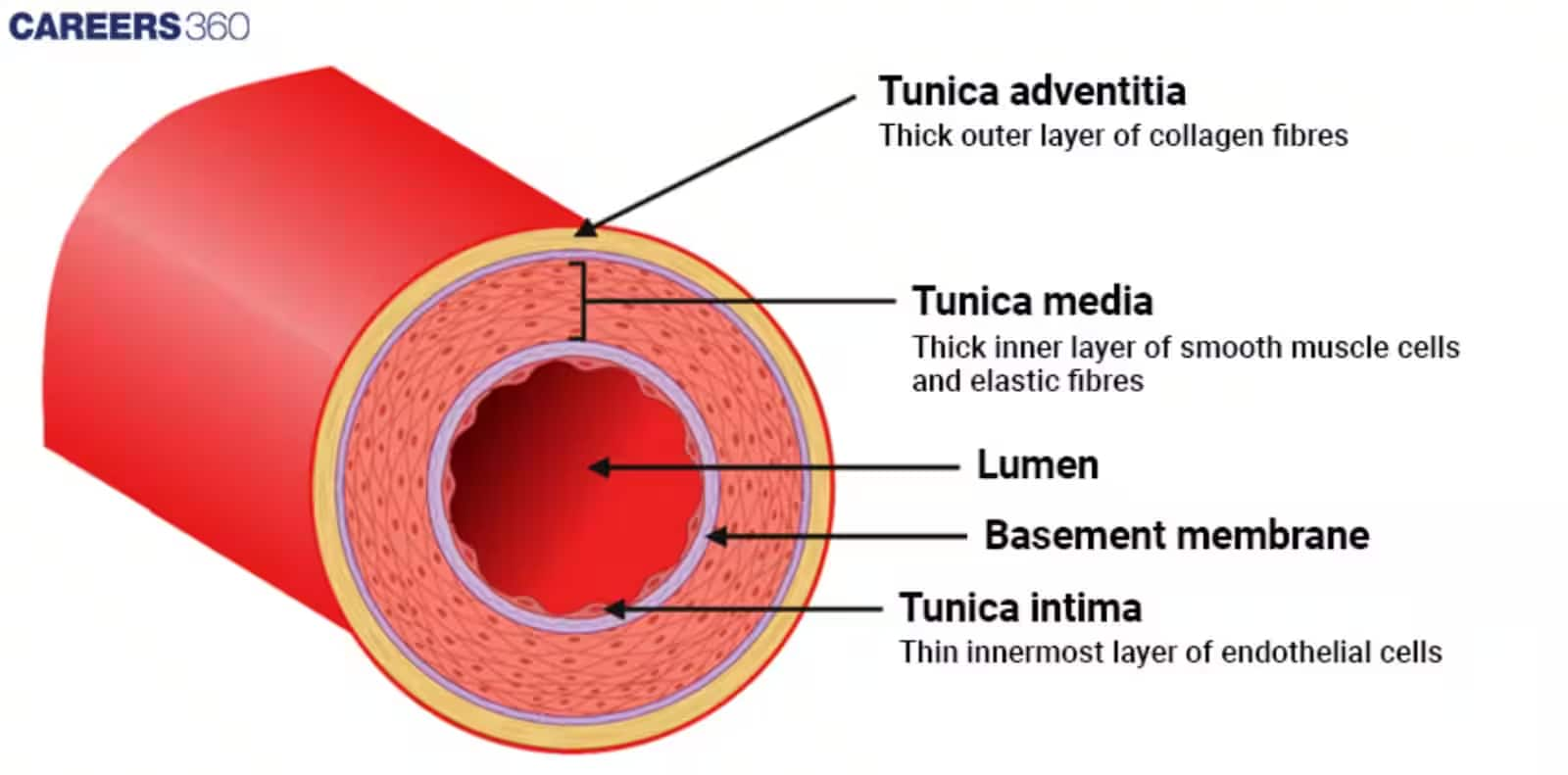NCERT Class 10 Science Chapter 6 Notes Life Processes- Download PDF Notes
Ever wondered how living things manage to eat, breathe, and stay alive? The NCERT Class 10 Science Chapter 5 Notes Life Processes explore different processes in simple language, including nutrition, respiration, transport, and excretion. These notes contain short bullet points, well-labelled diagrams, and real-life examples to help students stay focused. Students can use the NCERT Notes for fast revision or just to understand the chapter without too much stress.
This Story also Contains
- NCERT Class 10 Science Chapter 5 Life Processes: Download PDF
- Class 10 Science Chapter 5 Life Processes Notes
- Chapter 5 Life Processes: Previous Year Question and Answers
- How to Use Life Processes Class 10 Notes Effectively?
- Advantages of Class 10 Science Chapter 5 Life Processes Notes
- Chapter-Wise NCERT Class 10 Notes Science

The Life Processes Class 10 Notes talk about how our body and plants take in food, break it down, and throw out waste. Extra short tricks are included to help remember tough terms easily. Diagrams are given in the NCERT Class 10 Science Chapter 5 Notes PDF, by which students know how to write answers in exams. Going through the NCERT Notes for Class 10 will help students make their basics clear in the subject without any extra help.
NCERT Class 10 Science Chapter 5 Life Processes: Download PDF
The chapter Life Processes covers important topics like nutrition, respiration, transportation, and excretion in plants and animals. To revise faster and save time during exam prep, students can download the NCERT Class 10 Science Chapter 5 Notes PDF. This PDF is perfect for offline study and quick revision, and these NCERT Notes for Class 10 Science explain each process step-by-step.
Also, students can refer to
Class 10 Science Chapter 5 Life Processes Notes
It is interesting to see that even a small organism like an amoeba has to eat, breathe, and remove waste just like us. In the Life Processes Class 10 Notes, these life processes are explained simply. It helps to understand how our own body works every day to keep us alive. The notes for the chapter are given below, which were prepared by subject experts according to the latest NCERT curriculum for your better understanding:
What Are Life Processes?
In a living body, energy is supplied by food. It can be categorised as a carbon source.
The food source has to be broken up into smaller molecules in the body to derive energy.
This whole process of deriving energy from food particles is known as nutrition.
Also, for carrying out nutrition, various oxidising and reducing chemical reactions take place in our body. This involves oxygen, which is obtained from the outer atmosphere into our body by a process known as respiration.
In some organisms, specific organs are not responsible for carrying out some specific functions, and one simple process called diffusion is sufficient to provide life.
But in the case of complex organisms such as humans, every single tissue is assigned a particular task to be done.
As our body already has food and oxygen in a particular part of the body, these need to be transported to other parts of the body where they are required.
There must be a transportation system to transport that oxygen and food from one part of the body to another part of the body.
While carrying out various chemical reactions using carbon sources and oxygen, various by-products are produced in our bodies, which are harmful to our health.
Those products are removed from our body, and that is done by a process known as excretion.
Nutrition
We need energy for anything that we do. That energy is derived ultimately from food.
In order to get energy, different ways are used by different organisms.
Some organisms obtain their food in the form of simple inorganic compounds, i.e., carbon dioxide and water, which can be seen in plants and bacteria.
Whereas other organisms use complex food particles, and then that complex food particle needs to be broken down into a simpler form, which is done by some biocatalytic enzymes.
These kinds of organisms that are dependent on their food on other organisms are known as heterotrophs.
For example, animals, including human beings. Simple organisms such as plants that can make their food are known as autotrophs.
Autotrophic Nutrition
In plants, carbon dioxide and water are taken up from the outside environment, and in the presence of sunlight, chlorophyll is converted into carbohydrates and oxygen by the process of photosynthesis.
The end products that are obtained are both utilised.
Carbohydrates are used to provide energy in the plant body, and oxygen is released in autotrophic nutrition.
It is further taken up by animals for the process of respiration. Carbohydrates are stored in the form of starch.
The following events take place during the process of photosynthesis :
(i) Light energy is absorbed by chlorophyll.
(ii) Light energy is converted to chemical energy, and water molecules are split into hydrogen and oxygen.
(iii) Carbon dioxide is reduced to carbohydrates.
All these steps don’t take place one after another, but can take place in different sequences in different organisms.
For example, in desert plants, carbon dioxide is taken up at night, whereas sunlight is absorbed by chlorophyll in the morning.
In the plants, some green-coloured pigments can be seen after looking into their sectional view, and those are known as chloroplasts. They contain chlorophyll.
Stomata are tiny pore-like structures that are present at the surface of leaves. Two major works associated with the stomata are
1. Gaseous exchange is the exchange of carbon dioxide and oxygen
2. Loss of water by transpiration.
The closing and opening of the pore are functions of the guard cell.
With the increase in the amount of water, guard cells swell up, resulting in the opening of the stomatal pore, whereas guard cells shrink in the absence of water, resulting in the closing of the stomatal pore.
Various experiments can be carried out to prove the necessity of these four components, which are sunlight, chlorophyll, water, and carbon dioxide, in the process of photosynthesis.
Carbon dioxide is taken up by the plants from the animals that are released in the process of respiration.Water is gained by them through their roots from the soil, and chlorophyll is present in their leaves.
Sunlight they get from the atmosphere, and also there is a need for some new chemicals like nitrogen, magnesium, etc, which are obtained from the soil itself.
Heterotrophic Nutrition
The food that is taken by organisms to obtain energy is different in the case of different organisms.
In the same way, the breakdown of the consumed food also involves different processes.
Some organisms break down their food outside the body and then absorb it. For example, fungi, yeast, bread mould, mushrooms, etc.
Also, there are some organisms that break down those complex food molecules inside their body and then absorb their nutrients, for example, animals like human beings.
Some organisms derive their nutrition from other plants and animals without killing them. This kind of nutrition is known as parasitic nutrition, which is used by various parasites like Cuscuta, lice, ticks, leeches, etc.
How Do Organisms Obtain Their Nutrition?
Since the food and the way in which it is taken are different in different organisms, the digestive system is also different. For example, in a single-celled organism, the whole digestive system takes place through the entire body surface.
As the complexity of an organism increases, particular organs of the body are assigned particular tasks in digestion.
In an amoeba, its finger-like projections surround the food, forming a food vacuole.
Inside this food vacuole, the complex substances are broken down into simpler substances and then transferred into the cytoplasm. The undigested food is removed from the body.
In amoeba, the shape is formless, but that is not the case with paramecium, which has a special, shoe-shaped shape and a particular spot for food digestion.
In a paramecium, food is transported to that spot with the help of Cilia.
Nutrition in Human Beings
The alimentary canal is responsible for digestion in humans. The alimentary canal starts from the mouth and ends with the terminal part of the digestive tract. In between, different organs have particular assigned functions for digestion. The process of digestion is to break down complex food particles into smaller ones and derive nutrition. Breaking down complex food particles starts in the mouth itself. The complex food particles are crushed into smaller pieces by teeth in the mouth. Also, big food particles such as starch are converted into simpler forms of sugar by an enzyme known as salivary amylase. It is released from saliva. Peristaltic movements are caused by the muscles that are responsible for pushing food in the alimentary canal in the forward direction.

From the mouth, the food passes into the stomach through a food pipe, which is also known as the oesophagus.
The stomach helps in the digestion of food by releasing digestive juices. The gastric gland of the stomach releases hydrochloric acid. Also, one protein-digesting enzyme known as pepsin is released in the stomach. It acts only in an acidic medium, which is provided by hydrochloric acid, and to protect our body from excess acid, mucus is present in the stomach.
Food is then transported to the small intestine through a sphincter. The small intestine is the largest part of the digestive system, and its size varies according to the food eaten by the organism. For example, in herbivores, cellulose is hard to digest, which is why they have a much larger small intestine than carnivores, which digest meat more easily.
The small intestine is the major part of the digestion of carbohydrates, proteins, and fats. In the small intestine, the secretion from the liver and pancreas is also released.
The pancreatic enzymes that are released can only work in a basic medium, but the food that is obtained from the stomach is acidic. Bile juice is responsible for the process of emulsification, which is the breaking down of large fat globules into smaller ones.

The pancreas secretes pancreatic juice, which has enzymes, for example, trypsin, which is responsible for protein digestion, and lipases, which are responsible for fat digestion. Also, the wall of the small intestine secretes Intestinal juices, which are responsible for converting proteins into amino acids, fats into fatty acids, and glycerol, carbohydrates, etc.
The digested food is absorbed by small finger-like projections known as villi. These are responsible for increasing the surface area of absorption.

- Also, as different blood vessels are present in these villi, the digested food is transported to the whole body through them. Also, the undigested food is passed down into the large intestine, where extra water is absorbed, and faecal matter is passed out from the body through the anus by the sphincter ani muscles.
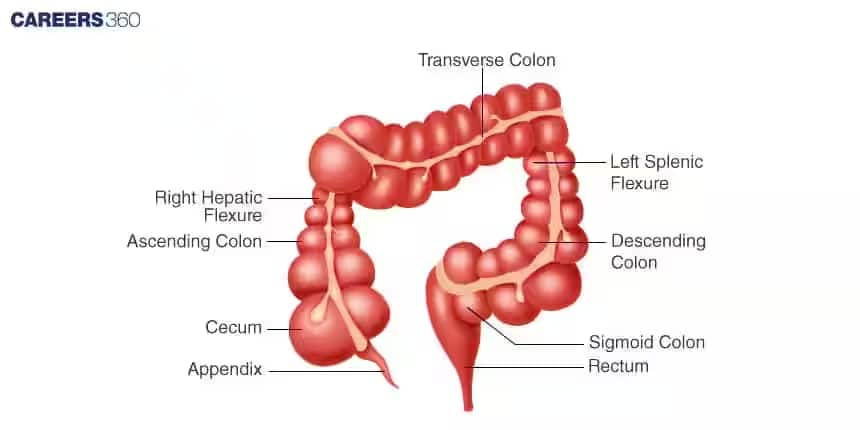
Respiration
After digestion, there occurs a need for the breakdown of those simpler food molecules into energy in the cells, and that process is completed with the help of oxygen. Some organisms release carbon dioxide and water as the end product. While in some organisms, methods other than this are used. But still, in all these methods, the first step is always the breakdown of 6-carbon glucose into a 3-carbon molecule known as pyruvate.
This conversion takes place always in the cytoplasm further this Pyruvate can be converted into ethanol and carbon dioxide in yeast during the process of fermentation, as in this case breakdown of glucose takes place in the absence of oxygen that’s why this process is known as anaerobic respiration whereas when glucose is converted into pyruvate in the presence of oxygen in mitochondria the process is known as aerobic respiration.
The energy released in aerobic respiration is far more than that which is released in anaerobic respiration.
When there is a lack of oxygen in the muscles, then Pyruvate is converted into lactic acid, which is also a three-carbon molecule, and the accumulation of which in animal cells leads to cramps while doing exercises.
The energy, which is released during this cellular respiration, is used to synthesise a molecule known as ATP that is required to carry out various endothermic reactions in our body.
We know that terrestrial organisms can take up oxygen from the atmosphere, but aquatic organisms take up the dissolved oxygen from water.
In humans, the air enters our body through the nostrils and is filtered there with the help of fine hairs present in the passage. The mucus present in the passage also helps to control dirt.
.jpg)
Then, passing through the throat that has cartilage to ensure that air doesn’t collapse, air passes into the lungs.
In the lungs, there are several branches present known as Bronchioles that further lead into balloon-like structures that are known as alveoli. Their surface is covered with blood vessels.
After the air is filled in the lungs, the alveoli are filled with the air, and that results in their expansion.
Carbon dioxide from the blood is taken up into alveoli, and oxygen from the alveoli is taken into blood vessels, from there it's transported to all other cells of the body.
When the body size is larger, for example, in human beings, then the diffusion alone cannot carry out the transport of gases.So some pigments are responsible for the gaseous transfer.
In human beings, one coloured pigment known as haemoglobin in the blood is responsible for the uptake of oxygen because of its high affinity with oxygen.
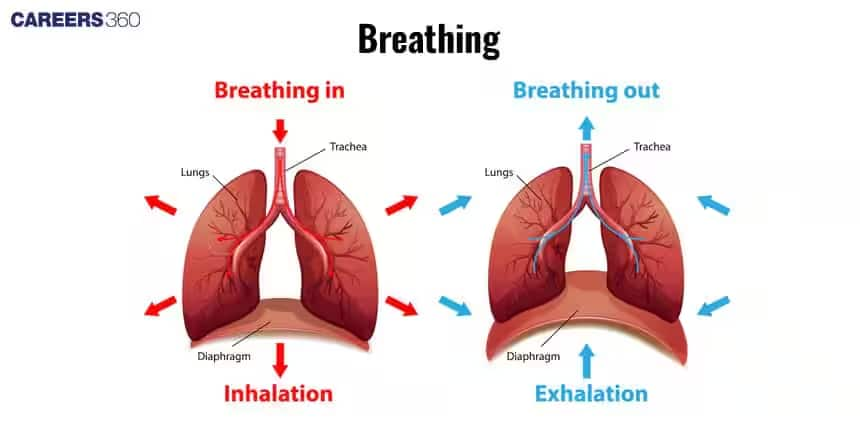
Transportation
Blood is the carrier of food, oxygen, and waste material.
Blood is a connective tissue that has major components, such as plasma.
All these cells in the blood are suspended in plasma, and plasma transports food, nitrogen waste, salts, etc.
In blood, oxygen is transported through RBCs.
Thus, we can conclude that there’s a need for one pumping organ as well as a network of vessels for transportation, and also a backup option for the same in case the transport system gets damaged.
Transportation in Human Beings
Our Pump - the Heart
The pumping organ in our body is a muscular organ known as the heart, which is separated into different chambers to ensure that oxygen-rich blood doesn't mix with carbon dioxide-rich blood.
There is a need to transport carbon dioxide-rich blood to the lungs in order to get oxygen in exchange, and that oxygen-rich blood then needs to be carried into the heart so that it can be pumped back into all the cells of our body.
After oxygen-rich blood from the lungs is carried up to the left atrium of the heart, it contracts so that it can pass into the left ventricle, which in response relaxes to fill the blood into it. After this, the contraction in the left ventricle results in the release of blood into different parts of the body.
In a similar way, the deoxygenated blood is brought up into the right atrium, which contracts to receive the blood.
Later, it transfers blood into the right ventricle in the same way, after which the contraction of the right ventricle results in the transfer of deoxygenated blood into the lungs.
As ventricles are responsible for the transfer of blood into organs, they have much thicker walls than Atria.
Also, valves are present in the heart to ensure that blood is not pumped back into the heart while contracting.
Oxygen enters the blood in the lungs.

- The separation of the left side and right side of the heart is useful to keep deoxygenated blood away from mixing with oxygenated blood. This proves to be helpful in the organism, which is involved in maintaining its body temperature. So constant energy is needed.
- In an organism in which the temperature is dependent on the ambient temperature, i.e., the temperature of the surroundings, mixing in deoxygenated and oxygenated blood doesn’t pose any problem, for example, in amphibians.
- Amphibians have a three-chambered heart, whereas in complex organisms like human beings, blood passes through the heart twice, thus completing two cycles.
- The transportation of blood is known as double circulation. In fish, only a single cycle takes place where oxygen is taken up by the gills and forcefully passed up into the blood, and that is further transported in the body.
The tubes - blood vessels
Three major blood vessels are involved in the process of transportation. They are arteries, veins, and capillaries. All three of them have their differentiating characteristic. We can tabulate the same as always :

Arteries | Veins | Capillaries |
1. They are thick-walled | 1. They are thin-walled and have a valve. |
|
2. Carries blood from the heart to other organs of the body | 2. Carries blood from different organs to the heart |
|
3. situated very deep into the skin | 3. Situated superficially on the skin. |
|
Maintenance by platelets
In case we face any injury, and any of our body’s veins are damaged, it will result in a reduction of pressure. This will ultimately result in a decrease in the efficiency of pumping. To avoid this, blood has platelet cells, which circulate and make a plug at the place of leakage, known as blood coagulation.
Lymph
There’s another type of fluid present in the body, which is formed when some materials from the arteries, like plasma, proteins, and RBCs, are released into the intercellular spaces. It’s dissimilar to the plasma as it is colourless and has less protein. The major function of lymph is to carry fat in the body. It also drains extra fluid from the intercellular spaces back into the blood.
Transportation in Plants
As we have seen earlier, plants take up carbon dioxide from the atmosphere to carry out photosynthesis.
In plants, the soil is the nearest source of nutrients, having all the nutrients like nitrogen, minerals, phosphorus, etc.
As the complexity of the plant body increases, the diffusion process alone cannot transport the required materials, such as water, from one part of the body to other parts, and that calls for a much better transportation system.
As plants do not move, and most of their parts are dead in the form of sclerenchyma tissue, they need comparatively less energy.
The water that is obtained by the roots is transported to other parts of the plant with the help of Xylem, which is a water-conducting tissue, and the photosynthetic food that is formed in the leaves is transported to other parts of the plant with the help of phloem, which conducts the food in the plant body.
Transport of water
In plants, the Xylem tissue of roots, leaves, and stems is all interconnected to form a network.
Root hairs actively absorb water and mineral ions (including iron) from the soil; these minerals and water are then transported upwards through the xylem.
It creates a difference between the concentration of iron in the soil and the root, which results in the transfer of water from the soil to the root and ultimately to different plant parts.
But in large plants, there occurs a need for a much stronger method for the transport of water.During evaporation, when the loss of water takes place through stomata by the process of transpiration, a sectional pull is created at the roots, which pushes water from the roots to the higher parts of the plant.
In the daytime, when stomata are open, this transpirational pull is a major driving force for water transportation.
Transport of food
Transportation of the photosynthetic products from leaves to other parts of the plant body is done by sieve tubes and companion cells.
Phloem is responsible for the transportation of photosynthetic products as well as amino and other products.
In this case, the transportation takes place in both upward and downward directions, whereas that is not the case with Xylem.
There, the transportation takes place only in the upward direction.
Unlike the xylem, in which only physical forces are responsible, the chemical energy of ATP is used to transport the food from the place where pressure is high to the parts where pressure is low.
Excretion
Till now, we are very well aware of how gaseous wastes are released from the plant body as well as the human body, but during the metabolic reactions, nitrogen and other harmful products are also produced in our bodies. Technically, the metabolic process of removal of metabolic waste is known as excretion. In a simple organism, it's done by the process of diffusion, where the waste product is directly diffused into the surrounding water.
Excretion in Human Beings
In human beings, the excretory system includes a pair of kidneys, a pair of ureters, one urinary bladder, and the urethra.
Kidneys form urine, and the urine that is released from the kidneys passes to the urinary bladder through the ureters, and then it’s stored there until it is released from the body through the urethra.
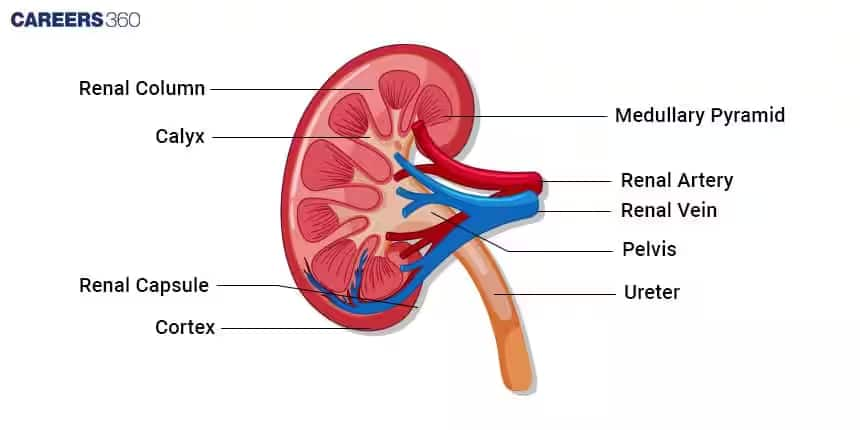
- In the kidney, a cluster of blood vessels is present around a cup-like structure of a coiled tubular part, and that cup-like structure is known as Bowman's capsule.
- In each kidney functional unit, a nephron is present, and they are packed closely together.
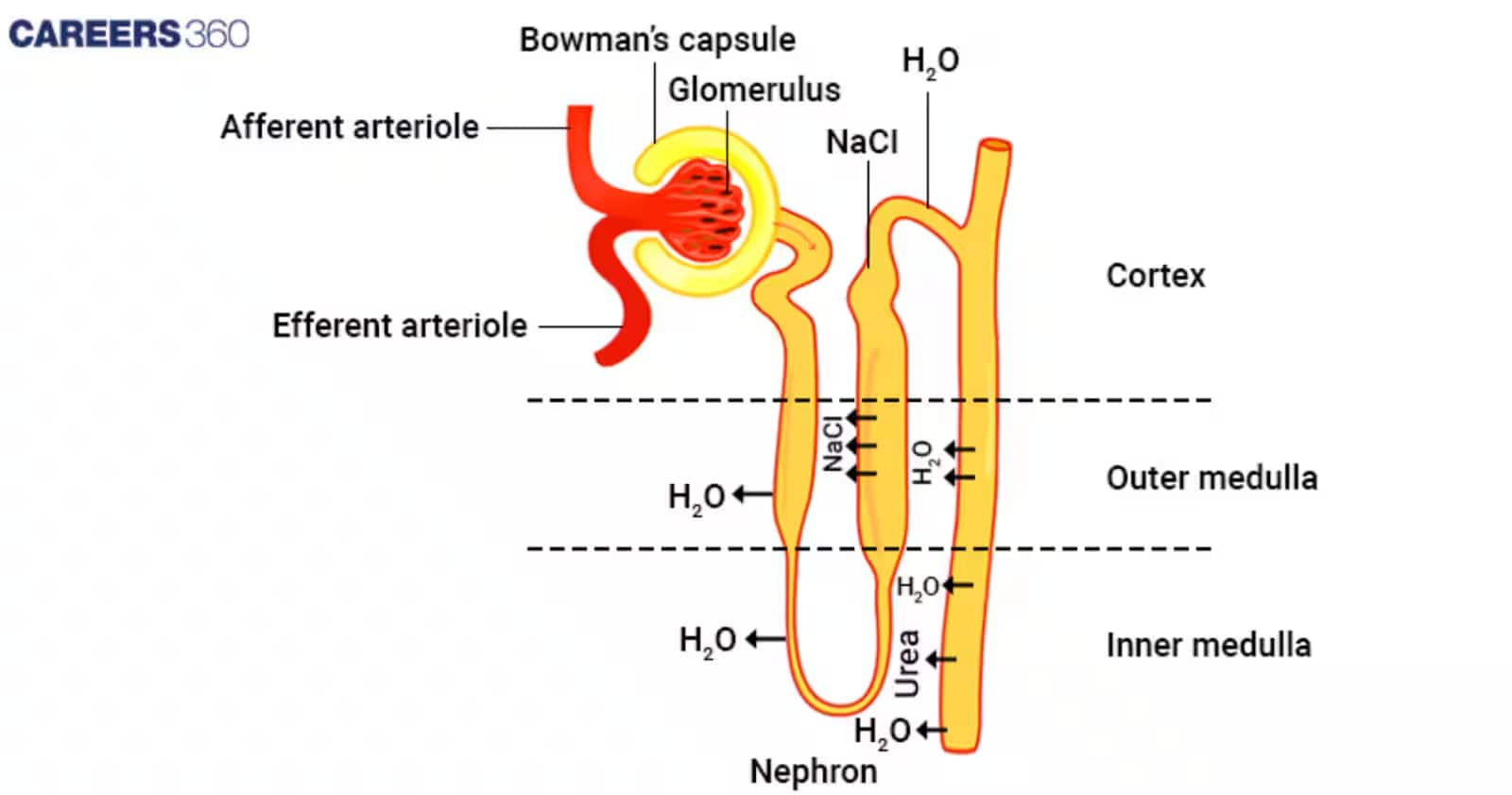
- In the initial filtrate, glucose, water, and minerals are selectively reabsorbed, after which waste substance passes from the kidney into tube-like structures known as ureters, which connect the kidney to the urinary bladder, and the urine is released through the urethra.
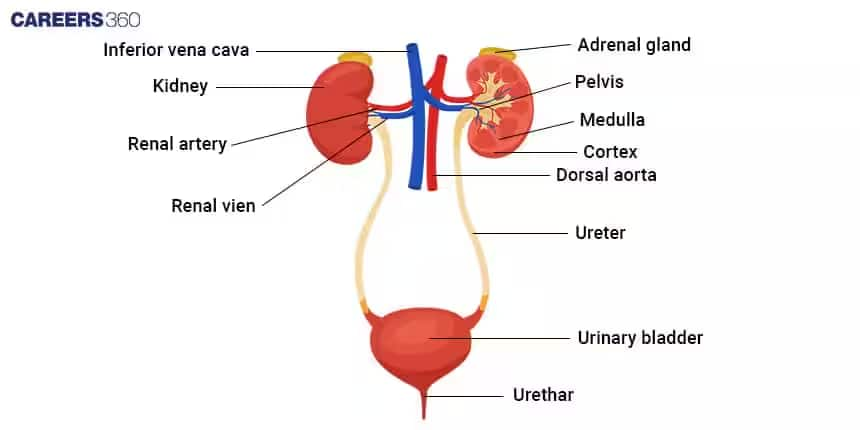
Excretion in Plants
- Plants use completely different ways of excretion, as oxygen is a by-product of photosynthesis and is released through stomata.
- Extra water is excreted from their body through the process of transpiration, and they also have the advantage of losing their dead cell parts.
- They also secrete gums and resins, and store some waste products in their cellular vacuoles.
- They can also excrete some of the waste products into the soil
Subject-Wise NCERT Solutions
Chapter 5 Life Processes: Previous Year Question and Answers
Some of the questions that have come up in past years from the chapter are given below. To solve these questions easily, students can use the NCERT Class 10 Science Chapter 5 Notes Life Processes.
Question 1. Depict the correct order of the holozoic mode of nutrition.
Option 1. Digestion→ Egestion →Absorption→ Assimilation →Ingestion
Option 2. Absorption→ Digestion→Ingestion → Assimilation→ Egestion
Option 3. Ingestion→ Digestion→ Absorption→ Assimilation →Egestion
Option 4. Ingestion→Digestion→ Assimilation→Absorption → Egestion
Answer :
Holozoic nutrition consists of five steps :
- Ingestion: Complex food is first taken inside the body through an opening
- Digestion: Complex food is then converted into a simple, soluble form through the process of digestion
- Absorption: Simplified food is further absorbed
- Assimilation: The absorbed food is then made available to the body through the process of Assimilation
- Egestion: The food that is not digested or the undigested food is removed from the body through the process of Egestion.
Hence, the correct option is (3) Ingestion→ Digestion→ Absorption→ Assimilation →Egestion
Question 2. The function of stomata is
Option 1. Gaseous exchange
Option 2. Intake of carbon dioxide
Option 3. Transportation
Option 4. All of the above
Answer :
Stomata are tiny pores present on the leaves that bring about the gaseous exchange, intake of carbon dioxide, and transpiration.
Hence, the correct option is (4) All of the above.
Question 3. The actual waste excreted out of a human body is 1-2L because of the process of
Option 1. Diffusion
Option 2. Osmosis
Option 3. Absorption
Option 4. Reabsorption
Answer :
The actual volume excreted is only 1L - 2L a day. It happens because the remaining filtrate is reabsorbed in the kidney tubules.
Hence, the correct option is (4) Reabsorption.
Question 4. Which of the following is the correct site of photosynthesis in plants?
Option 1. Mitochondria
Option 2. Chloroplast
Option 3. Ribosome
Option 4. Vacuole
Answer :
Photosynthesis takes place in the chloroplasts of plant cells. Chloroplasts contain chlorophyll, which traps light energy and helps in the synthesis of food.
Hence, the correct option is (2) Chloroplast.
Question 5. Which of the following enzymes is present in saliva?
Option 1. Pepsin
Option 2. Trypsin
Option 3. Amylase
Option 4. Lipase
Answer :
Saliva contains the enzyme salivary amylase, which begins the digestion of starch into simpler sugars in the mouth.
Hence, the correct option is (3) Amylase.
How to Use Life Processes Class 10 Notes Effectively?
Studying concepts like nutrition, respiration, transportation, and excretion requires a focused and smart approach. With the right study material, students can make learning easier.
- Start by revising diagrams and flowcharts to improve the understanding of processes explained in Class 10 Science Chapter 5 Life Processes Notes.
- Revise the steps of photosynthesis and respiration carefully, as they are important for exams.
- Go through the functions of the heart and the transportation of materials in plants and animals with the help of labeled diagrams.
- Practice writing well-structured answers on excretion in humans and plants to cover the chapter effectively.
- Go through the Class 10 Science Chapter 5 Life Processes Notes PDF for complete preparation and better exam performance.
Advantages of Class 10 Science Chapter 5 Life Processes Notes
Life Processes is one of the most important chapters, as it explains how living organisms perform different functions like nutrition, respiration, transportation, and excretion. Having well-prepared notes offers many advantages to students, some of which are given below:
- Class 10 Science Chapter 5 Life Processes Notes PDF makes it easier for students to understand the life processes.
- Using the notes saves a lot of time and helps in doing a quick revision before board exams and competitive exams like NEET.
- Important definitions, equations, and differences are highlighted in the notes prepared by experts.
- The notes cover all the topics which is important for exams, so that students do not miss anything.
- Doing regular revision of these notes improves memory retention and boosts confidence when answering questions with accuracy.
Chapter-Wise NCERT Class 10 Notes Science
Here are the direct links to access the notes for each of the 13 chapters included in the Class 10 science. These notes will help students revise all the important topics quickly and easily. Students can use them for board exam preparation as well as for building strong basics for competitive exams.
Frequently Asked Questions (FAQs)
The notes cover key topics like nutrition, respiration, transportation, and excretion in plants and animals. Each process is explained with diagrams and examples for better understanding.
These notes summarize all important concepts and definitions, making revision quick and effective. They also help students answer both short and long questions confidently in the board exams.
NCERT Class 10 Science Chapter 5 Notes Life Processes very well explained the difference between the transport of materials by Phloem and Xylem.
Xylem | Phloem |
1. Transports water | 1. Transports food |
2. Transports only in the upward direction | 2. Transports in both upward and downward directions |
3. Uses physical forces | 3. Uses chemical force |
1. Functional unit of excretion - Nephron
2. Energy currency of cellular respiration - ATP
3. Product formed in the lack of oxygen - Lactic Acid
4. muscle tiny pore-like openings on leave surface - Stomata
NCERT Class 10 Science Chapter 5 Notes Life Processes informs that ATP is the energy currency for most cellular processes.
- The energy released during the process of respiration is used to make an ATP molecule from ADP and inorganic phosphate.ADP combines with phosphate taking energy to produce ATP.
- Endothermic processes in the cell then use this ATP to drive the various energy-requiring metabolic reactions.
Hemodialysis is a procedure where a dialysis machine and a special filter called an artificial kidney, or a dialyzer, are used to clean your blood. To get your blood into the dialyzer, the doctor needs to make an access, or entrance, into your blood vessels.
(a) The force that is exerted by blood against the wall of a vessel is called blood pressure.
(b) The pressure of blood caused inside the artery during the ventricular systole that is contraction is called systolic pressure. The normal systolic pressure is about 120 mm of Hg
(c)The pressure in the artery caused during ventricular diastole relaxation is called diastolic pressure. The normal diastolic pressure is 80 mm of Hg
Popular Questions
Courses After 12th
Applications for Admissions are open.
As per latest syllabus. Physics formulas, equations, & laws of class 11 & 12th chapters
JEE Main Important Chemistry formulas
Get nowAs per latest syllabus. Chemistry formulas, equations, & laws of class 11 & 12th chapters
JEE Main high scoring chapters and topics
Get nowAs per latest 2024 syllabus. Study 40% syllabus and score upto 100% marks in JEE
JEE Main Important Mathematics Formulas
Get nowAs per latest syllabus. Maths formulas, equations, & theorems of class 11 & 12th chapters
